by Allison Gorman
The Appalachian ginseng belt spans thousands of wooded miles from Maine to Alabama, which means that Larry Sanderson’s small ginseng farm on the Cumberland Plateau is pretty near the tail end.
Ginseng loves the beautiful, borderline inhospitable landscape. So does Sanderson, for different reasons.
American ginseng grows best in an eastern hardwood forest. It thrives in the dappled light and temperate climate. It gains strength from the roots and rocks it fights for purchase in the soil.
Since American ginseng root has become an increasingly valuable commodity in Asian markets, Midwestern farmers have started growing it in open fields under artificial canopies. Wisconsin is now the top exporter of ginseng.
Tennessee, where it grows wild, is a distant third. But ginseng seems to know the difference between fields and forests. Buyers certainly do.
Field-cultivated ginseng is less valuable than wild-harvested because its roots are considered less potent in Chinese medicine, said Professor Iris Gao, director of the International Ginseng Institute (IGI) at MTSU. Her research has lent credence to that theory. In one of the few published studies comparing the potency, her team at the IGI found that wild ginseng contained far more active ingredients than field-cultivated roots.
In 2020, the U.S. Department of Agriculture’s Southern Research Station reported that a dry pound of wild American ginseng was selling for hundreds of dollars, which was 10 to 25 times more than field grown.
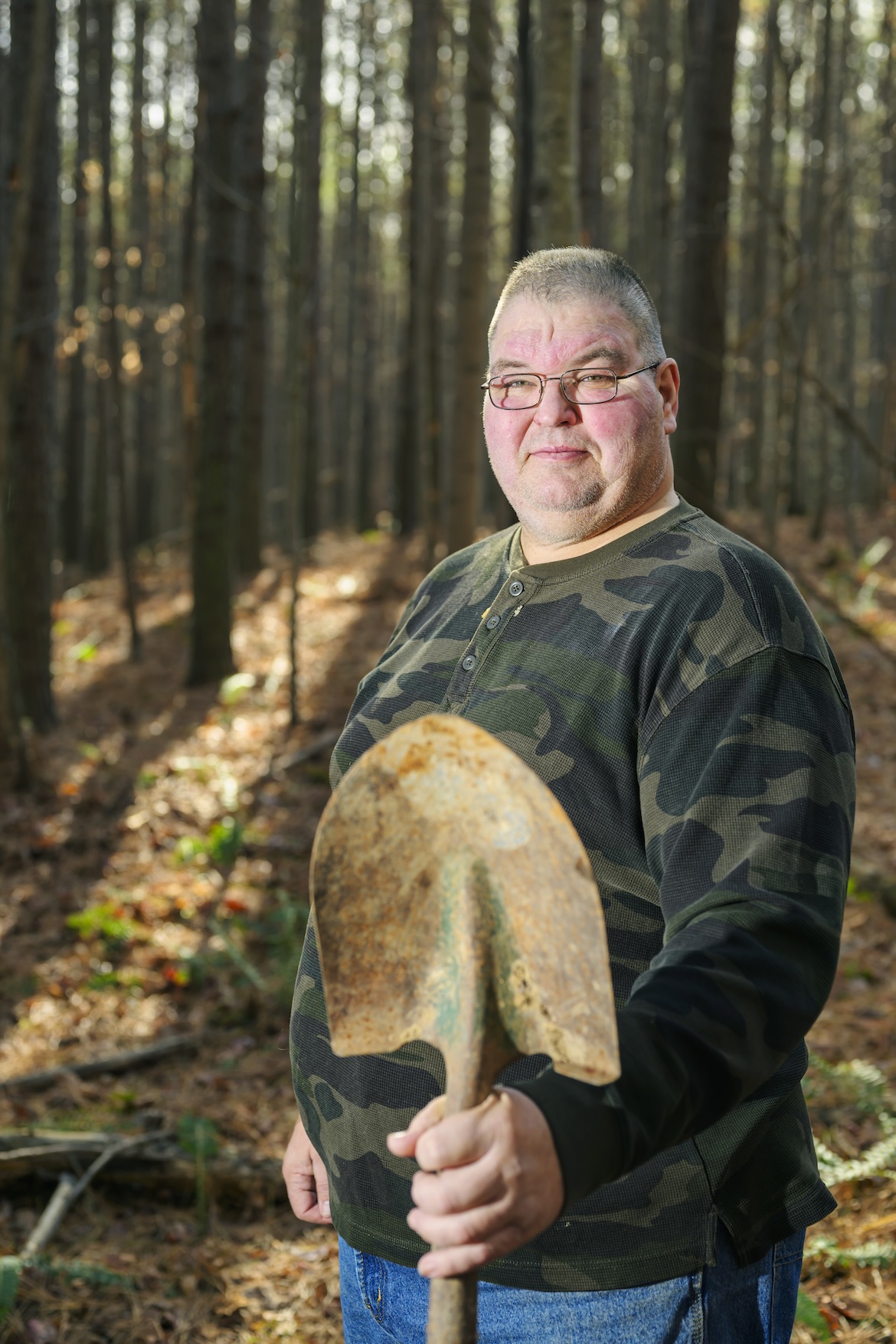
The high selling price is a big part of the lure for Appalachian ginseng growers, who cultivate the plant in its natural habitat in the woods.
Another part is knowing you can make a living doing a thing if you work hard enough, because that thing is mostly in your hands.
After losing a lucrative living and his 401(k) with Enron (the energy-trading and utility company that famously went south in 2001), Sanderson decided not to depend on someone else to secure his future.
THE HIGH SELLING PRICE IS A . . . LURE FOR APPALACHIAN GINSENG GROWERS, WHO CULTIVATE THE PLANT IN ITS NATURAL HABITAT.
He’d spent his whole life raising things. As a kid in Montana, he raised vegetables and ducks and rabbits. Even when he was a power-plant operator and making good money, he raised worms in his basement and sold them to fishermen. He trusted himself and he trusted nature. He figured if they worked well together, he could make a career out of ginseng.
In 2017, Sanderson and his wife bought 10.5 forested acres between Monteagle and South Pittsburg. They loved their little slice of mountaintop. They loved the fact that it was so quiet and that if they disturbed the quiet there was nobody around to care.
“We can yell or shoot our guns or whatever we want to do out here,” he said.
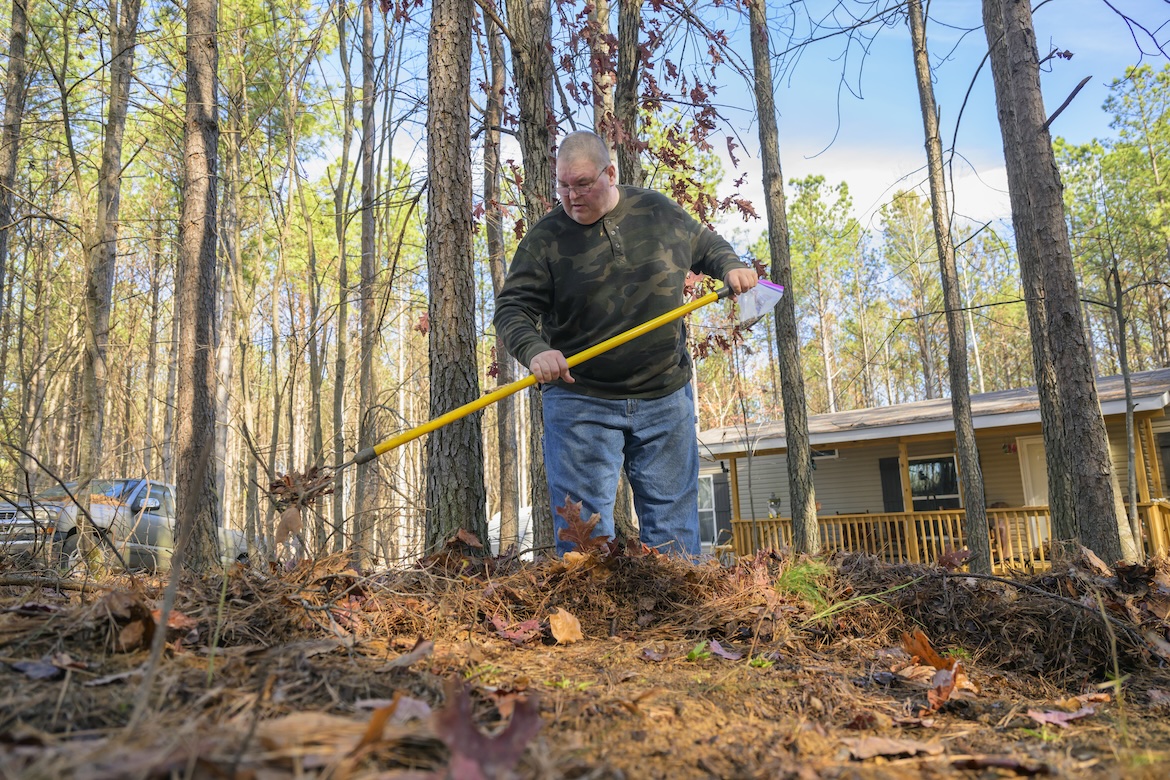
It’s hard to imagine Sanderson doing either of those things; he’s a chill guy. Maybe more so since he broke free of the corporate grind. If he has yelled a little, though, he’s had reasons. Nature can be an unreliable partner too. He’d barely gotten started growing when he was diagnosed with a hereditary heart condition that made the hands-on work of farming challenging. And then there was ginseng’s famously challenging nature.
Fortunately, ginseng is tenacious, like most of Appalachia, and Sanderson is too. He may be trying to make a living in the middle of nowhere, but it helps to know he’s not going it alone. He’s got a partner in Gao and MTSU.
What Sanderson is doing is known as wild-simulated farming. The concept’s not new, but it’s new to ginseng, Gao said. With financial backing from the U.S. Department of Agriculture (USDA), she’s been working closely with Sanderson and the budding regional community of ginseng growers to advance the wild-simulated method. They’re breathing new life into an old way for mountain folks to make a living.
Since the 18th century, Tennesseans have put food on the table by digging for ginseng, heading deep into the woods every fall. The work is hard and dangerous and usually doesn’t provide a stable income, especially now that ginseng is getting harder to find.
American wild ginseng has been an endangered species since 1974. Digging on public land has serious legal consequences. Digging on private land—if it’s not your own, that is—can have consequences of its own.
Time for a new business model. One without the Appalachian occupational hazards.
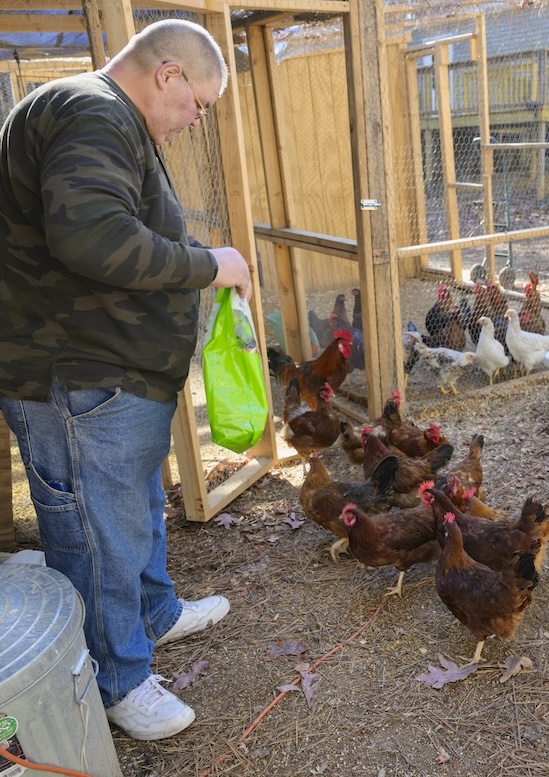
Sanderson was figuring that model out as he went along when he sowed his first 100,000 seeds. He learned from the internet that ginseng don’t like pine needles. He learned from an estimate from a local tree-removal service that he wasn’t going to pay someone to take down those big pines that dropped needles in the area he wanted to plant. He raked the needles back himself.
All but 500 seedlings from that first crop died away. Along the way, he learned something else that was new: Ginseng don’t like ferns either.
And so it could have gone for Sanderson, learning one or two devastating lessons at a time, year after year. They might not have been quite so devastating if ginseng were an annual crop. But sowing ginseng is a long-term proposition—more like planting an orchard than a row of corn. Those field farmers in Wisconsin can reap what they sow in four years. Appalachian wild farmers have to wait seven.
Luckily, Sanderson found out about Gao.
She didn’t know all there was to know about ginseng either—but like him, she was dedicated to knowing more. So was the USDA, which saw the economic potential of ginseng and the economic need of the region where it grows wild. It invested $148,000 in Gao’s vision of advancing the new model for farming ginseng.
As Sanderson was struggling to raise his first crop, Gao was getting IGI off the ground.
SANDERSON HAD PLENTY TO KEEP HIM OCCUPIED UNTIL GAO’S RESEARCH BORE FRUIT.
The MTSU institute opened in May 2018. In the nearly six years since, Gao and her team have spent part of their time in the lab, investigating ginseng’s healing properties and working to develop more resilient hybrids, organic fungicides, and other natural ways to combat whatever can kill a valuable crop. They’ve spent the rest of their time talking to growers like Sanderson, wherever they are—at their farms in the woods, at regional meetings, or at the workshops and symposiums the IGI hosts. In stark contrast to ginseng digging—which is by nature a secretive, territorial, and finite business— wild ginseng farming has flourished in Appalachia through collaboration.
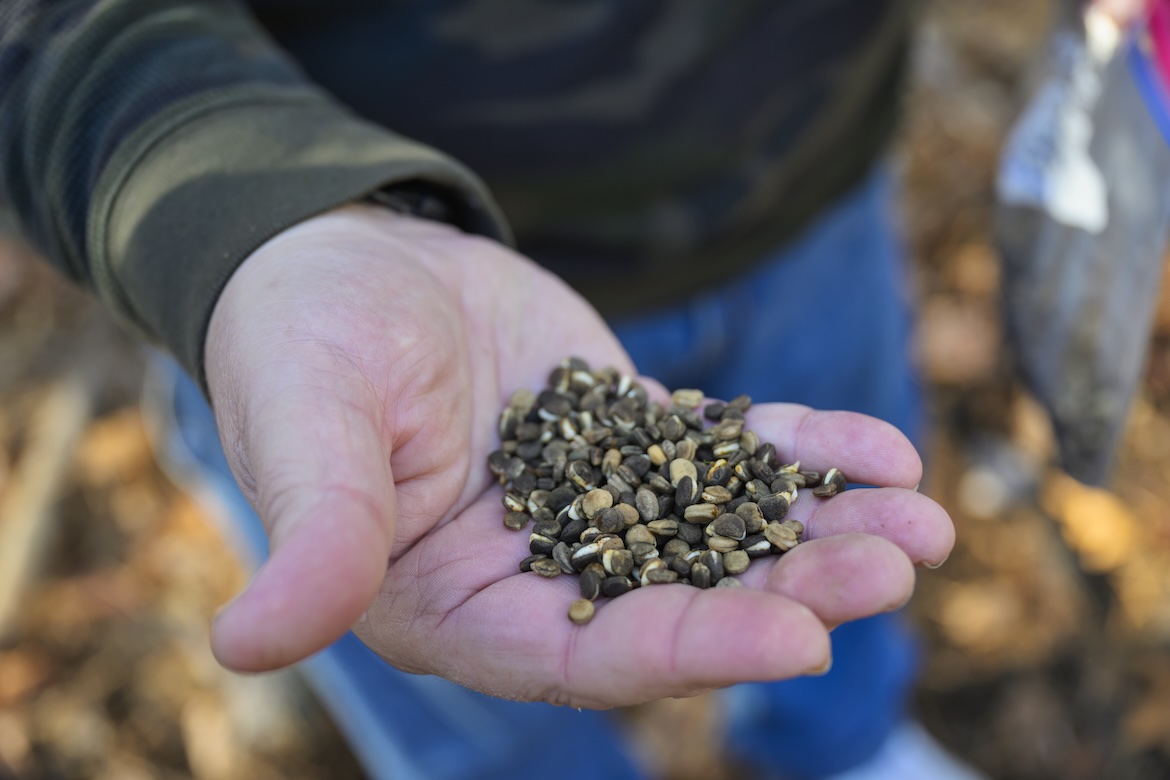
Granted, it’s a loose collaboration. Growers and distributors tend to be fiercely independent, which is likely what attracted them to the landscape and the lifestyle in the first place. But they collectively benefit by sharing information and solving problems together, with the help of Gao.
“She’s working towards the good of everybody,” Sanderson said. “I think the world of her and what she’s doing. With her helping out the other growers, everything I’m doing is helping them, and she’s the common thread.”
Gao said she can’t speak for other agricultural communities—the corn farmers or cattle ranchers, for example—but the spirit of camaraderie among the region’s ginseng farmers is strong. Maybe that’s because it’s a fledgling community where everyone seems to know each other. Maybe it’s because they share the same struggles. They’re all small farmers. They’re all growing a uniquely challenging crop.
“Whoever grows ginseng knows how much time and effort it takes,” Gao said. “It takes investment. And courage.”
THEY’RE BREATHING NEW LIFE INTO AN OLD WAY FOR MOUNTAIN FOLKS TO MAKE A LIVING.
Winning the Race
If you’re in your 50s and you’ve just lost your career and your savings, it takes courage to pick yourself up and try something new. But that’s what Sanderson did after Enron scandalously went belly up, robbing him of what he’d thought would be a comfortable retirement.
Throw in a far scarier, equally unexpected challenge—a menacing blood clot in his heart—and it’s hard to see how Sanderson was still eager to move to an economically challenged region and learn to grow a challenging plant. But he was.
Doctors were able to dissolve the clot, and he kept planting and learning. In 2018, he sowed his second crop. Thousands of those plants survived. In 2021, he got his first three-prong, the distinctive leaf pattern of the maturing ginseng. You can harvest at four or five prongs. If he kept working hard and nature cooperated, Sanderson figured he’d get his first harvest in 2026.
When he talked to other people about the three-prong, he would gush like a new grandpa. “It has a little flower on it. It’s just as cute as it can be.”
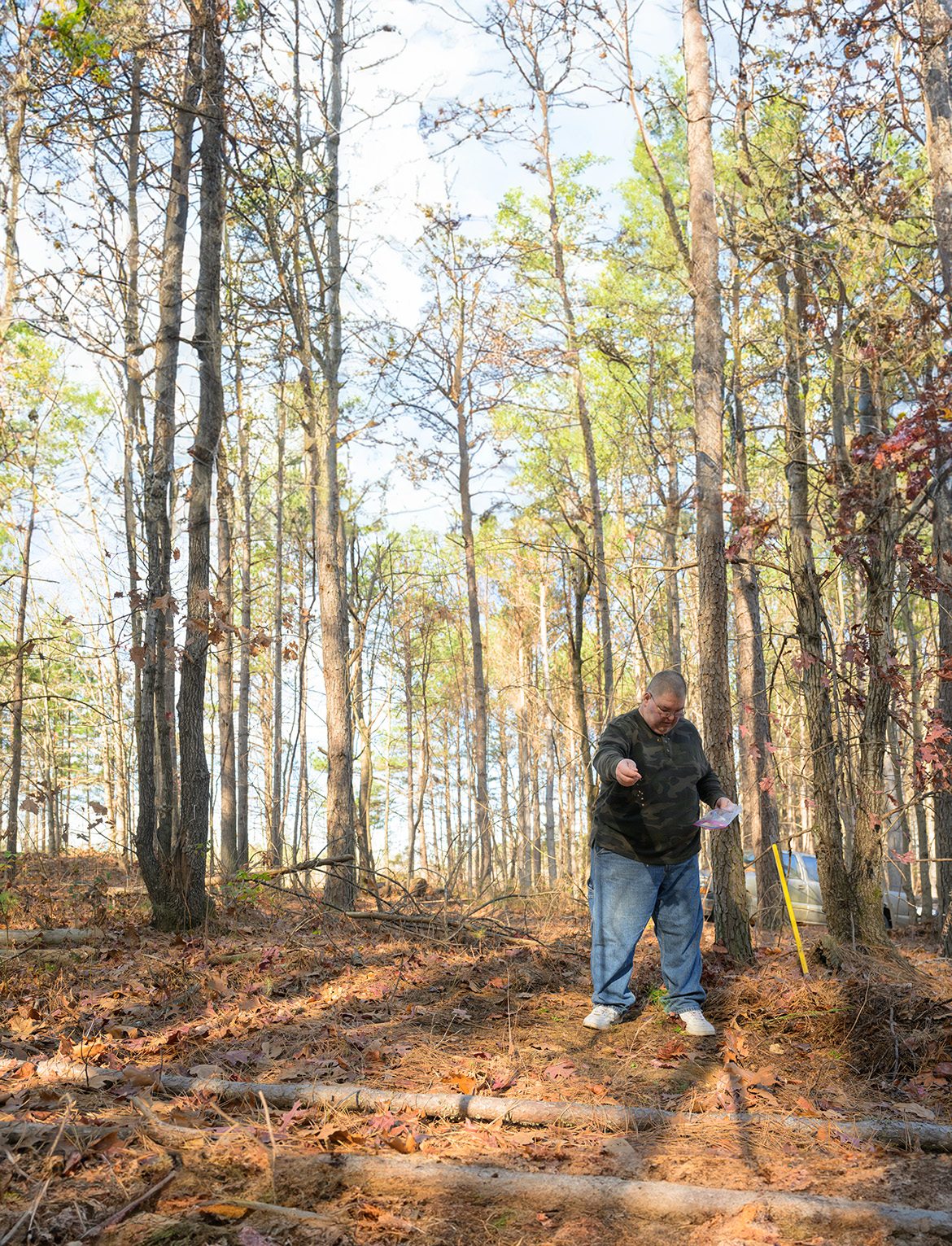
His enthusiasm was only slightly tempered by a new challenge: “My heart went south on me again.”
It had been headed south for a while. In 2020, the previous year, his son had to help him plant his crop. In 2021, instead of planting, Sanderson had heart surgery and then spent the rest of the year in limbo, waiting to learn if he’d need a second surgery. Even if he’d had the energy to plant, he wasn’t sure it would have made sense.
All this time, Gao stayed in regular contact with Sanderson. She told him she’d been looking into another medicinal herb, goldenseal. It wasn’t as valuable as ginseng, but it was fetching a good price on the Asian market, and you could harvest it sooner.
Sanderson is patient and tenacious, as any ginseng grower should be. Still, it probably helped to learn that he didn’t need a second surgery. He felt his energy slowly coming back.
He didn’t plant in 2022. He did become a new grandpa and was tickled to death.
In 2023, he felt well enough to drive to California to see the baby. It would be his first vacation in seven years. Before he and his wife left the mountain, he walked five pounds of seed into the ground, with plans to sow another five when he got home. He was anxious to catch up on all the stuff he couldn’t do when he was sick.
“Now that my health is doing better and I know that I’m not going to die, I need to start actively working this little plot and getting these plants ready for harvest,” he said.
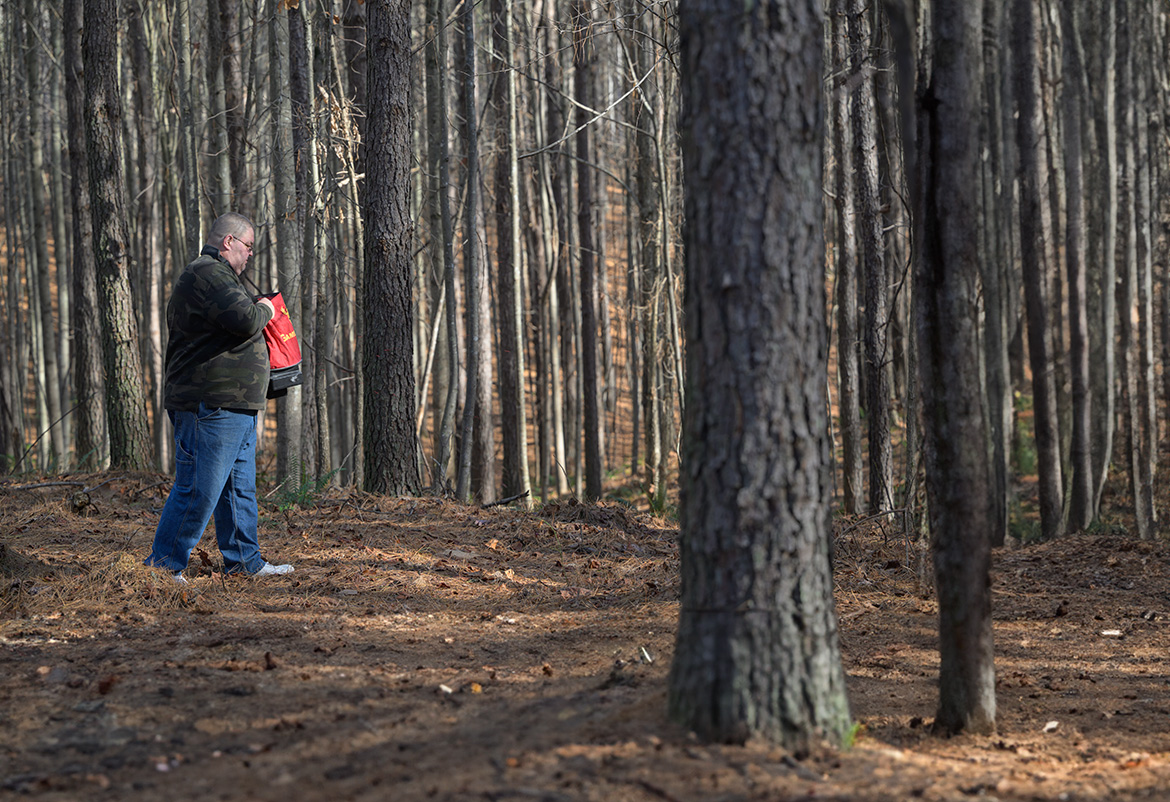
There were lots of things to do. Then again, lots of good things had been happening.
Gao had connected Sanderson with the United Plant Savers, in Ohio, who certified him as a woods-grown ginseng farmer, a government-recognized designation.
He’d connected Gao with his sister’s boss, who had an organic antifungal oil that he thought might remove ginseng blight. Organic ginseng fetches a higher price than ginseng sprayed with fungicides or pesticides. Most growers, including Sanderson, have to apply expensive chemicals regularly to keep their crops alive.
If this oil did what Sanderson thought it might, he’d be ready to move on to certified woods-grown organic.
“This is going to blow certified organics wide open,” he said. “I can kill any blight and still be considered organic.”
WHOEVER GROWS GINSENG KNOWS HOW MUCH TIME AND EFFORT IT TAKES.
Gao had agreed to do some testing, although getting definitive results could take time. A lot of herbs are reported to have antifungal properties, she said. She’d start with an initial screening to see if this antifungal, intended for human use, warranted further research.
“It’s worth testing if it works on this certain pathogen,” she said. “It may or may not work, because antifungal pathogens are very specific. Something that works for one does not necessarily work for another.”
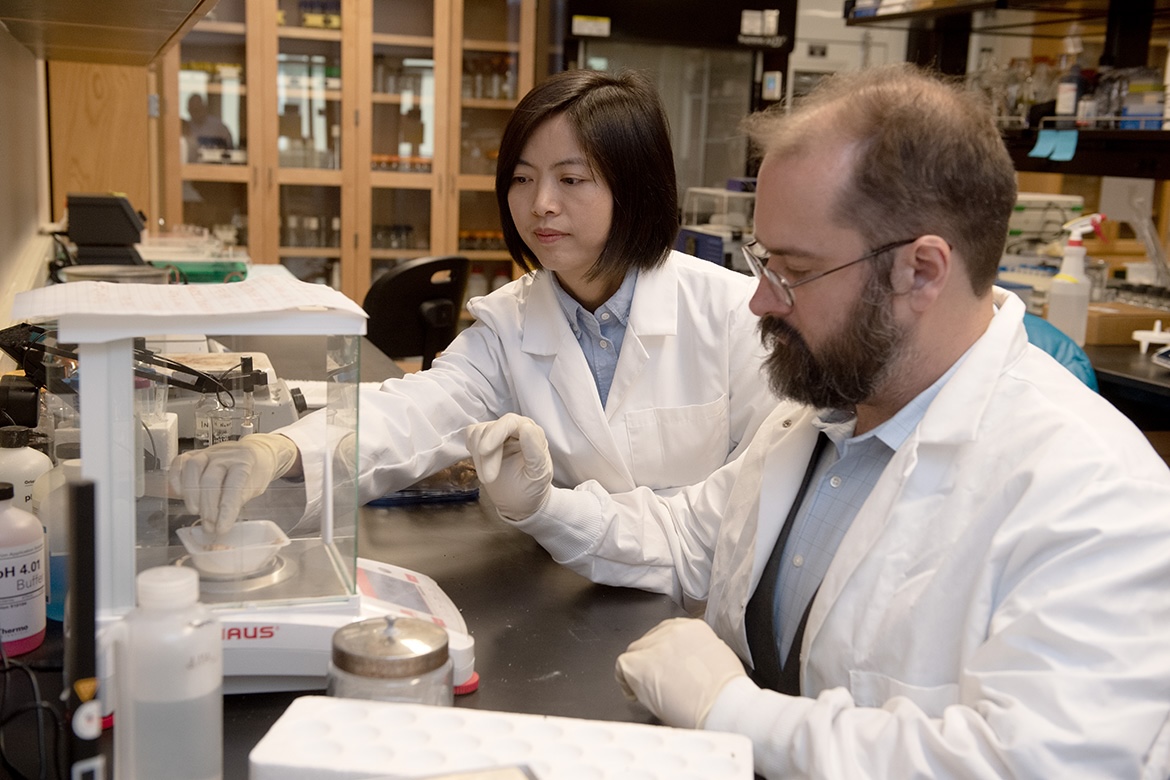
Sanderson had plenty to keep him occupied until Gao’s research bore fruit.
From a connection at United Plant Savers, he’d learned how to go from three to four prongs faster. (His oldest plants still had three.) Turned out he just needed to thin his tree canopy, from 90% coverage to 75% or 80%.
He was working out the logistics. He still wasn’t going to pay someone to take down those pines.
“I don’t have a way to snake ’em out of there,” he said. “And I don’t want to just drop them and leave them, because that’s going to cause issues later on.”
When the four-prongs finally came, which meant the roots were finally big enough, he’d harvest them. And then, he said, he’d probably put them in dry barrels and wait.
The market price had gone down since he first planted them. Sanderson seemed unaffected. He’s not going anywhere.
Finding the Finish Line
The U.S. Department of Agriculture (USDA) is a big believer in ginseng and a big believer in MTSU Professor Iris Gao. A USDA grant of $148,000 got the International Ginseng Institute (IGI) at MTSU off the ground, and a second grant of $455,000— combined with $300,000 from MTSU—is funding the development of biocontrol agents to prevent blight.
Along with principal investigators from Penn State and the University of Virginia, Gao is leading a multinational research team. It’s a big project to address a big problem.
“The major diseases in ginseng are soil-borne fungal diseases,” Gao said. “They can spread quickly, wiping out a crop in a very short time. That’s the No. 1 issue with [ginseng farming]. It takes time, seven to 10 years. Imagine getting a fungal disease in your fifth or sixth year that wipes out all your plants. It would be a disaster.”
The easiest way to handle blight—spraying crops regularly with synthetic chemicals—is enormously expensive. It also makes the ginseng less desirable on the Asian market, where it’s used in foods, personal care products, and Chinese medicine.
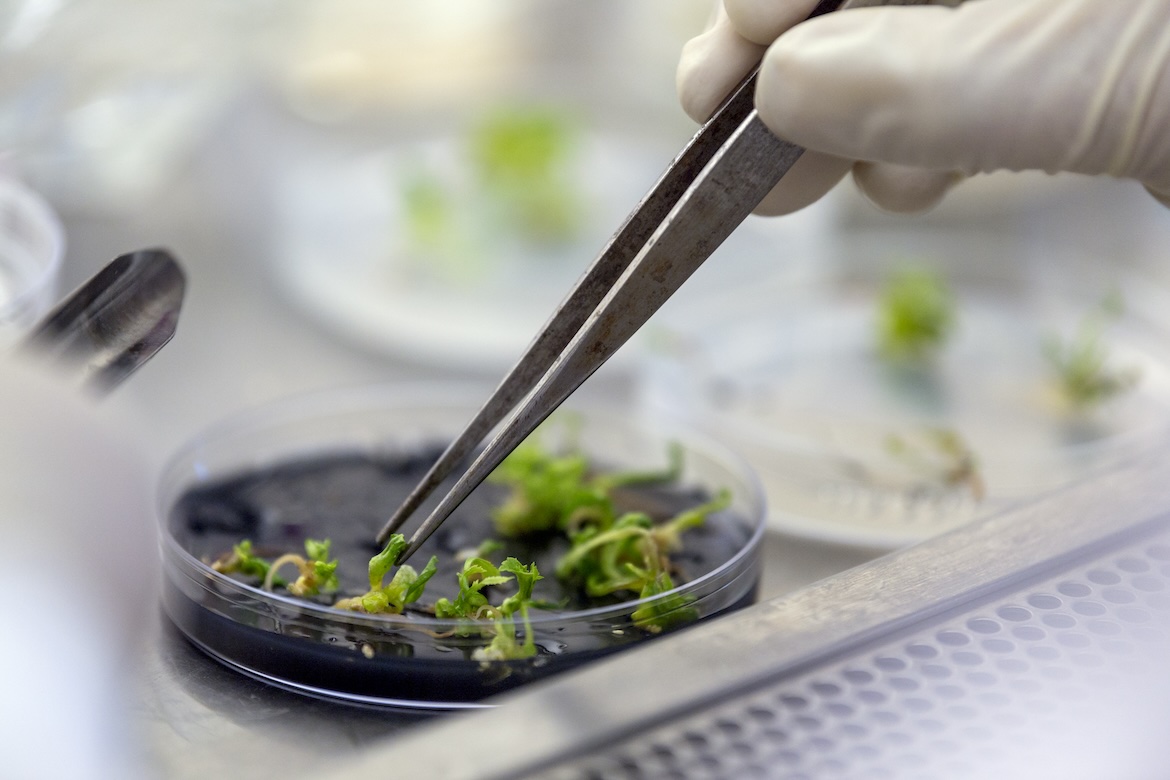
The IGI is researching the use of goldenseal, a “companion plant” to ginseng, that grows in the same habitat and has antifungal properties, Gao said. “We have some good results from that,” she said.
Late last year, they submitted a manuscript of the study for publication. Along with a team of collaborators at Tennessee State University, they also published the first reports of three new pathogens that infect American ginseng. Once they confirmed pathogenicity, Gao said, she and the team began working on developing new, sustainable methods of killing the blight that kills ginseng. The botanical extracts showed “wonderful control in vitro.” The next step was to start testing on live plants.
When the results come in, the IGI will share them with regional growers like Larry Sanderson through newsletters, workshops, and symposiums. Those in-person meetings are also a chance for growers to learn from each other, and for Gao to synthesize the information for collective use.
“That way she can help new people coming in,” Sanderson said. “If they ask where they should go, she can say, ‘Here’s what the technology is showing us, this is all the information that we have, so you can decide what you want to accomplish.’ What she’s doing is just phenomenal.”

COMMENTS ARE OFF THIS POST